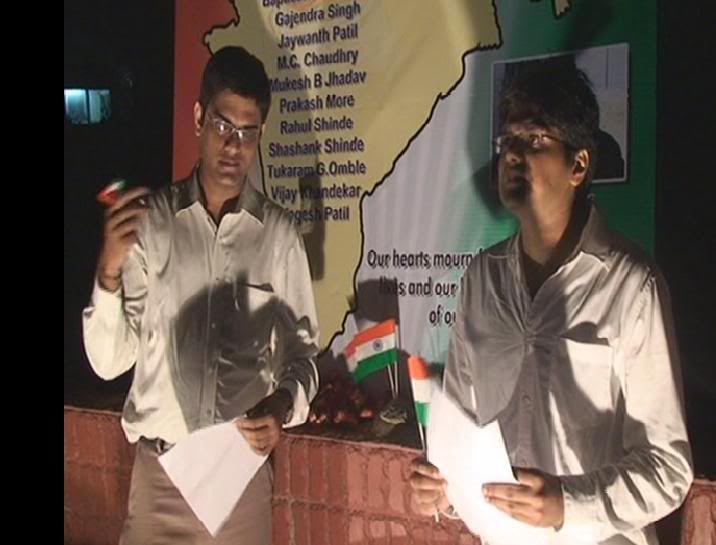I attended Swami Parthasarthy’s lecture on chapter V of the Bagavad Gita on Karma yoga and Gnyana Yoga -“The yoga of action and renunciation”. I feel it is my duty to write a summary of the four days of lecture for the benefit of all.
Kindly read my previous post on the Significance of idol worship before you read this one.
Atma- Body difference
As I mentioned in my previous post, most people do not understand the difference between Atma and body. Atma is permanent while the body is perishable. Atma is what enables the eye to see but it cannot be seen, it enables the ear to hear but it cannot be heard, it enables the mind to conceive but it cannot be conceived. Atma is a dispassionate witness to all our actions. It is the cause and not the effect. It is like the petrol in a car- the petrol causes the car to move, but it can neither be blamed for the accident nor praised for the safe arrival of the car.
Bagavad gita says the entire purpose of one’s life is to understand the atma and concentrate on it always. One must derive all happiness from inside (from the atma), than from the outside (the external environment). Bagavad gita goes on to say that the happiness one derives from touch, smell, sight, and through other sensory perceptions are nothing but wombs of sorrow.
The reason is not hard to see, for the happiness one derives from the outside is not permanent. As an example, let’s say someone starts smoking a cigarette for happiness. The first cigarette one smokes no doubt gives him happiness, yet the next day in order to get the same level of happiness he may have to smoke two cigarettes instead of one. This slowly increases in number and finally the person finds himself smoking one whole packet. After reaching this stage, the person smokes not because it gives him happiness, but because he feels miserable if he does not smoke. At this point the person is said to have become neutralised to smoking. This is the characteristic of all things that cause addiction. Consuming an addictive substance does not give happiness, but abstaining from it results in sorrow.
If I ask someone whether he enjoys breathing oxygen he would think I’m being stupid, but if I forcibly close the nostrils and suffocate him, he wouldn’t mind giving me his entire wealth just for drawing some air. Similarly we do not enjoy seeing normal things, but we would feel miserable when our eyes are tied even for a minute. You can see for yourself that our senses have the same characteristic of an addictive substance. Any enjoyment derived out of these senses, cannot be permanent and soon you’d get neutralised to that object that is causing you happiness. This is why you must derive your happiness from within and not from outside.
How do we attain the knowledge of the atma ?
Bagavad Gita prescribes two ways of realising the atma –Karma yoga (through action) and Gnyana yoga (through renunciation). Among the two the first one, Karma yoga is simple and can be followed by everyone. Gnyana yoga requires one to control the senses before attempting to realise the atma. In fact, Lord Krishna himself prescribes Karma yoga to Arjuna, to realise his atma.
Karma Yoga – The art of doing action
The nature has given the animals a blue print which they follow without fail. You do not find one tiger in nature that eats grass, nor do you find a cow that eats meat. Animals in the forest are neither overweight nor underweight. Human beings on the contrary have the power to make choices. But on what basis do we make those choices? Karma yoga clarifies this doubt.
All actions can be classified into three categories –Selfish, unselfish, and selfless. Those actions which are done for our selves are called selfish actions, while those that are done for others are called unselfish actions. Bagavad gita says that the best form of action is neither of these two - It prescribes Selfless action. Selfless actions are those that are performed neither for us nor for others. Selfless action is performed when we don’t think of the benefactor. Can any action be performed that way? You’d be surprised to know that all actions in nature are selfless actions. The Nightingale sings neither for itself nor for you. Similarly the sun shines neither for itself nor for you.
You can be a plumber, carpenter, Engineer, or a Doctor, whoever you are, if you can do your action without thinking of who is going to benefit from it, you’re a Karma Yogi. Doing action for the sake of action is the message of Karma yoga. If action is performed in this way, it results in excellence and more importantly it relives the Karma yogi from the bondages of this world. This type of action enables him to realise his atma and attain eternal happiness.
Most of the problems in this world are caused because of searching for happiness from outside. Instead of thinking of the evenness in objects, we’re worrying more on the differences between objects. A small car may seem incomparable to the grandeur of a sedan, but if one realises it is the same fuel that drives both, then it would be easy to see the evenness in both. Likewise, if one understands that all living beings are made of atma, it would be far easier to see through the perishable body and appreciate the evenness. One who sees the evenness in all objects and sees success and failure pass by without being bothered by them, the Gita says, stops going through the cycle of birth and death. He is the one who has realised his atma.
.png)













